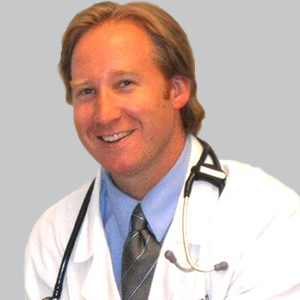Article
Does Cannabis Have Potential Therapeutic Use in Migraine, Headache?
Author(s):
While studies support the use of cannabis for pain in adults, a lack of clinical data and an inability to perform studies has slowed the medical community’s understanding of the drug’s conceivable use in headache conditions.
Eric P. Baron, DO, a clinical assistant professor of neurology at Cleveland Clinic Lerner College of Medicine of Case Western Reserve University

Eric P. Baron, DO
The substantial evidence supporting the use of cannabis and cannabinoids for chronic pain in adult patients has led many to believe that this may infer a potential benefit for their use in chronic headache disorders, though studies on the topic are lacking.
During an advanced pre-meeting course at the American Headache Society’s 2018 Scottsdale Headache Symposium, Eric P. Baron, DO, a clinical assistant professor of neurology at Cleveland Clinic Lerner College of Medicine of Case Western Reserve University, presented an extensive review of the clinical findings for cannabis’s use in pain, and noted that its potential in headache disorders warrants further study.1
“Many cannabinoids and terpenes have strong anti-inflammatory and analgesic properties, and supporting evidence suggest cannabis may assist in opioid detoxification and weaning,” he said during the course. “Data are needed to determine the most effective ratios of cannabinoids, terpenes, and other compounds for pain and headache disorders.”
In his review of the clinical data, Baron’s presentation produced recommendations for when it is utilized. He noted that its vaporized form is most likely the best option as opposed to the smoked and oral forms. Additionally, he explained that the recommended doses are varying for both tetrahydrocannabinol (THC) and cannabidiol (CBD) based medications.
“With THC, starting at 1 mg to 2.5 mg is a good starting dose. Going up to 5 mg will still provide a clinical benefit for most patients with excess [adverse] effects,” Baron said. “Once you get up to 10 mg, it will start to produce common [adverse] effects for most, and 15 mg or more can cause the psychiatric [adverse] effects. For CBD, starting at 5 mg to 20 mg per day and titrating to effect is optimal. Once you get up to 160 mg or higher doses, sleep duration tends to increase, and some can experience sedation issues.”
Ultimately, Baron suggested that starting low, going slow, and staying low with doses is the best general use recommendation. This, he noted, allows for a promotion of tolerance to the psychoactive effects of THC. Additionally, using them in combination is best, “as CBD attenuates the THC [adverse] effects. A good place to start is 15% to 20% CBD with less than 1% THC,” he said. He also suggested CBD preparations for daytime use, with THC preparations for post-work, nighttime use.
He acknowledged the work of MacCallum et al, for the general use recommendations, which suggest using long-acting oral formulations for chronic conditions and their symptoms, and suggested vaporization as an add-on for episodic symptom exacerbations.2 Additionally, MacCallum and others recommend avoiding driving for 4 hours after inhalation, 6 hours after ingestion, and 8 hours if euphoria is experienced.
Baron said that with the increasing number of states allowing the use of medical marijuana—currently, 32 states allow it—and now up to 10 legalizing its recreational use, the need for physicians to further the research into its medicinal capabilities is more important than ever. He acknowledged that while currently, the qualifying conditions for patients vary state to state, the need for physicians to be able to have knowledgeable conversations with patients is essential.
“Doctors can’t prescribe cannabis. They can recommend or approve of its use,” Baron explained, “and under the 1st Amendment, both physicians and patients can discuss its pros and cons.”
Additionally, while the use of medical marijuana is not federally allowed, the 2013 Cole Memorandum reinforced that the US Justice Department would not enforce federal prosecution in states where it is legalized. However, in January 2018, former Attorney General Jeff Sessions rescinded the Cole Memorandum. And despite President Trump’s reinforced support of medical marijuana programs, “things are somewhat up in the air,” Baron said.
One of the challenges, he detailed, is that marijuana remains a Schedule I drug under enforcement of the Drug Enforcement Administration (DEA), which presents issues with receiving grants and approvals for studies of its use in headache. These challenges have been overcome in other areas, though, Baron said. In June 2018, the FDA approved the use of Epidiolex (CBD, GW Pharmaceuticals) for Dravet syndrome and Lennox-Gastuat syndrome, rare forms of pediatric epilepsy. It is a Schedule V therapy. Additionally, dronabinol (THC, AbbVie) and nabilone (THC, Mylan) are both approved for chemotherapy-associated vomiting and nausea.
Baron also reviewed the possible adverse effects of cannabis, concluding that current evidence suggests limited indications of cardiometabolic risk, as well as no evidence of oncologic risk, maintained psychosocial adverse effects, nor a risk of death. Current clinical evidence, he said, suggests a risk of respiratory issues with smoked variations, especially in children, as well as impaired ability to operate vehicles.
During a question and answer session after Baron’s presentation, Stephen Silberstein, MD, the director of the Thomas Jefferson University Headache Center and moderator of the session, asked the attendees to raise their hands if they’ve never had a patient inquire about the use of medical marijuana or CBD for their condition. Not a single hand went up.
“So, 100% of us have been asked,” Silberstein said. The room appeared relatively split, however, about the drug’s potential for the treatment of migraine or chronic cluster headache, with the majority of the panel of speakers pointing to the need for more data.
REFERENCES
1. Baron EP. The health effects of cannabis and cannabinoids in headache: benefits, harms, and legal implications; addiction, cannabis hyperemesis, spice syndrome, RCVS. Presented at: AHS Scottsdale Symposium; Scottsdale, AZ; November 14, 2018.
2. MacCallum CA, Russo EB. Practical considerations in medical cannabis administration and dosing. Eur J Intern Med. 2018;49:12-19. doi: 10.1016/j.ejim.2018.01.004.




